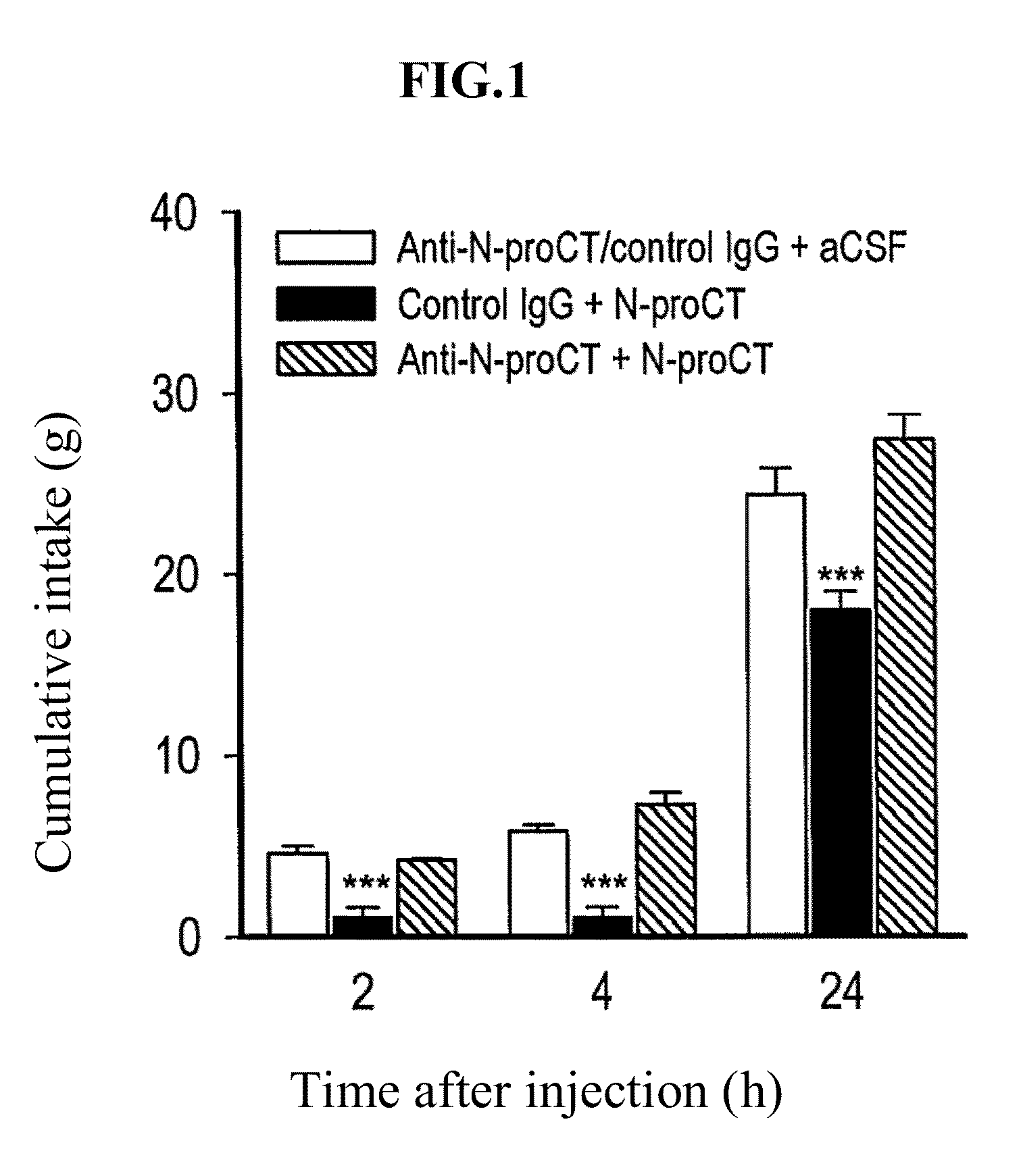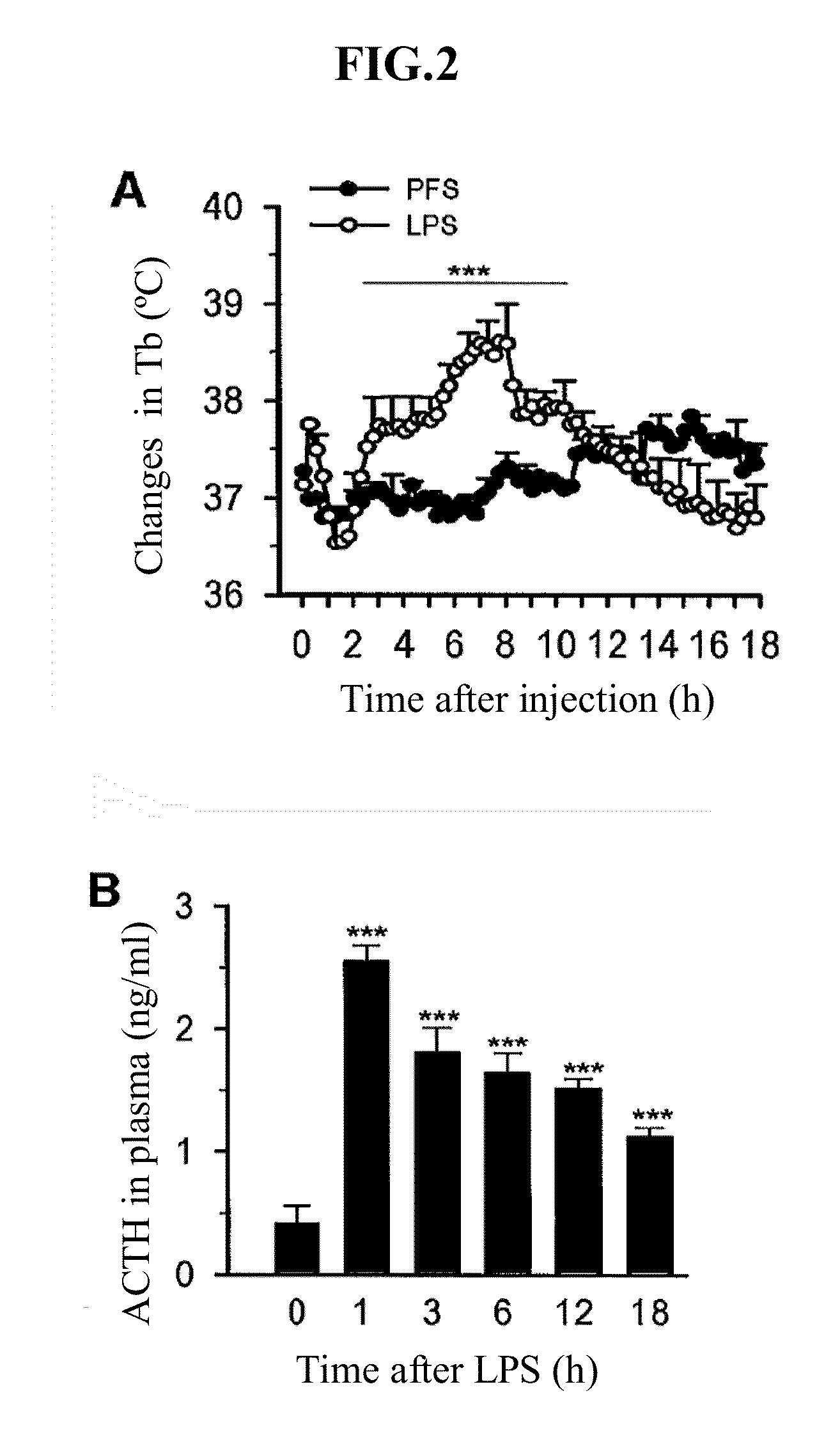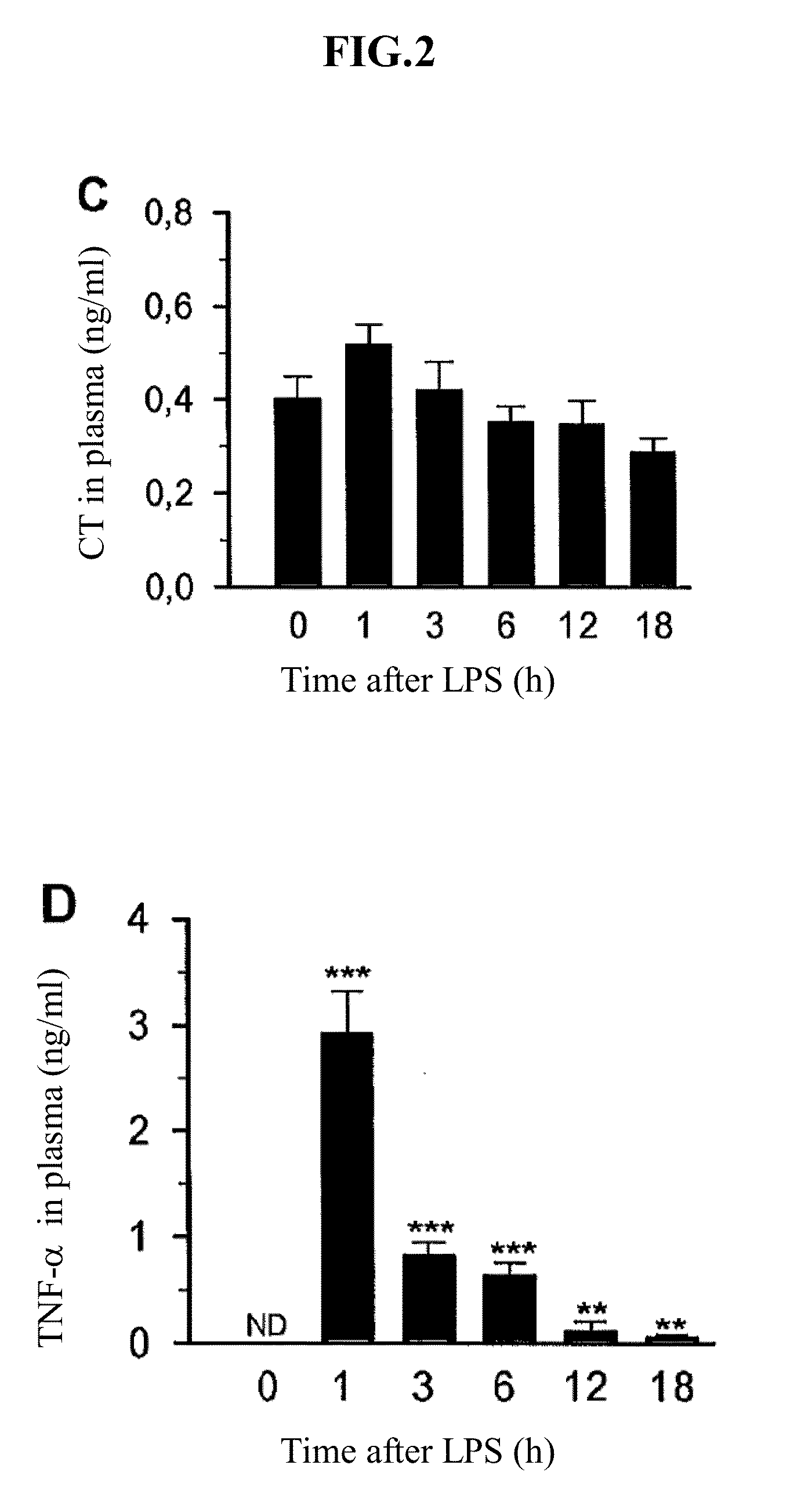Antibodies against n-procalcitonin
- Summary
- Abstract
- Description
- Claims
- Application Information
AI Technical Summary
Benefits of technology
Problems solved by technology
Method used
Image
Examples
example 1
Effects of the Intracerebroventricular Administration of Anti-N-PCT in N-PCT-Induced Anorexia
[0084]The effect of the cerebroventricular administration in the intake of is shown in FIG. 1. The intake was measured 2, 4 and 24 hours after a single intracerebroventricular injection of N-PCT (5 μg), at the start of night-time feeding. In accordance with previous data, the icy administration of N-PCT reduced food intake during 24 hours. In comparison with the administration of the carrier, N-PCT reduced the intake by 78% during the first 2 hours and 83% during the first 4 hours (P<0.001). The accumulated intake during 24 hours was reduced 26% with respect to the controls. The treatment with anti-NPCT reversed these effects (p<0.001). This confirms the specificity of the antibodies used. Furthermore, these data demonstrate the implication of NPCT in metabolic stress.
example 2
Effects of a Lethal Dose of LPS on the Behaviour and Plasma Levels of ACTH, CT and Cytokines
[0085]After the administration of a high dose of LPS (15 mg / kg, ip), all rats showed serious symptoms of disease. They quickly became lethargic and anorexic and showed standing on end of the hair, chromodacryorrhoea and diarrhoea. Many of the animals showed a short hypothermia followed by fever. The animals seemed moribund after 12 hours and none survived 48 hours.
[0086]As shown in FIG. 2A, the administration of 15 mg / kg of LPS caused a decrease in body temperature (Tb) from 30 minutes after the administration of LPS, and reached a maximum after one and a half hours. (36.5±0.06° C.). Within the first 2 hours after LPS administration, Tb began to gradually increase, reaching a maximum after 8 hours (38.67±0.15° C.), which lasted 12 hours (37.49±0.12° C.). Tb was not altered by the administration of PFS. The plasma levels of ACTH, CT, TNF-α, IL-1β and IL10 were also measured after the injection...
example 3
Expression of the Calca-1 Gene and Production of PCT in Plasma and Hypothalamus After LPS Administration
[0087]The Calca-1 gene was expressed at high levels in the hypothalamus after LPS administration (FIG. 3A). Similarly to PCT levels, the expression of Calca-1 began its increase one hour after administration. It reaches the maximum after 3 hours and begins to decrease after 6 hours, reaching basal levels after 12 hours. There is a low expression of Calca-1 in the rats treated with PFS.
[0088]LPS administration produces a fast and striking increase in PCT levels in plasma and hypothalamus. Between 1 and 3 hours. They reach a maximum after 12 hours and are maintained until the death of the animal. The increases are of 6000 and 540 times after 12 hours in plasma or hypothalamus, respectively. Those increases of PCT in plasma correlate with the production of PCT in the hypothalamus. There appears a fast increase after one hour that is maintained over time.
PUM
| Property | Measurement | Unit |
|---|---|---|
| Stress optical coefficient | aaaaa | aaaaa |
Abstract
Description
Claims
Application Information
 Login to View More
Login to View More - R&D
- Intellectual Property
- Life Sciences
- Materials
- Tech Scout
- Unparalleled Data Quality
- Higher Quality Content
- 60% Fewer Hallucinations
Browse by: Latest US Patents, China's latest patents, Technical Efficacy Thesaurus, Application Domain, Technology Topic, Popular Technical Reports.
© 2025 PatSnap. All rights reserved.Legal|Privacy policy|Modern Slavery Act Transparency Statement|Sitemap|About US| Contact US: help@patsnap.com



